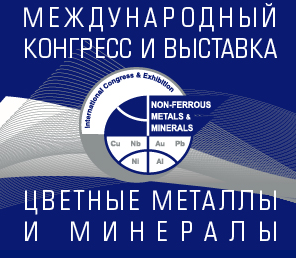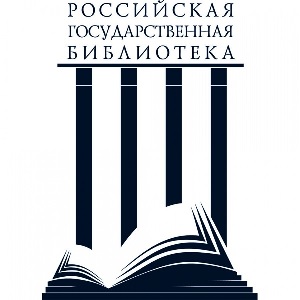ВЛИЯНИЕ ВИДА И РАЗМЕРА МЕЛЮЩИХ ТЕЛ НА СВОЙСТВА РЕАКТИВНОГО ГЛИНОЗЕМА ДЛЯ ОГНЕУПОРНОГО БЕТОНА
Аннотация
Огнеупорная бетонная продукция находит свое применение в различных сферах производства, таких как металлургия, керамика, стекольная, цементная и даже атомная промышленность. В любых местах, где используется высокая температура, требуется своего рода «защитник» от агрессивных сред, таких как жидкость, газ, твердые материалы. Как раз таким материалом выступает монолитный огнеупор, или же по-простому огнеупорный бетон. Такой бетон, так же как и обычный строительный, состоит из различного рода заполнителей, которые обладают как высокими температурами плавления, так и сильными механическими свойствами, которые придают конечному композиту необходимые свойства. В данной статье приведены результаты исследования влияния вида и размера мелющих тел в вибромельнице на свойства реактивного глинозема для огнеупорного бетона. Исследования показали, что использование в качестве мелющих тел шаров Ø12-18 наиболее оптимально. Микроскопический анализ показал, что форма и размер мелющих тел влияет на размер и форму частиц реактивного глинозема, так как позволяет снизить время помола с 30 мин (цех) до 20 мин, что с экономической точки зрения уменьшает издержки производства за счет снижения затрат на электроэнергию и увеличения срока эксплуатации вибромельницы. Так же за счет повышения по сравнению с цеховым (8500 см2/г) величины удельной поверхности до 11838 см2/г, возможно добиться лучшей упаковки частиц в бетоне. Таким образом, получены высокие показатели реактивного глинозема, которые позволят улучшить строительно-технические свойства огнеупорного бетона.
Для цитирования:
Левин Г.Э., Виноградова Л.А., Иксанов Ф.Р., Агапов Е.А. Влияние вида и размера мелющих тел на свойства реактивного глинозема для огнеупорного бетона. Изв. вузов. Химия и хим. технология. 2022. Т. 65. Вып. 9. С. 105-111. DOI: 10.6060/ivkkt.20226509.6693.
Литература
Lotov V.A., Sarkisov Yu.S., Gorlenko N.P., Zubkov O.A. Processes of heat release during hydration and harden-ing of cement in the presence of microsilica and superplasticizer. ChemChemTech [Izv. Vyssh. Uchebn. Zaved. Khim. Khim. Tekhnol.]. 2022. V. 62. N 2. P. 79-87 (in Russian). DOI: 10.6060/ivkkt.2022502.6490.
Teptereva G.A., Pakhomov S.I., Chetvertnev I.A. Renewable natural raw materials, structure, properties, application prospects. ChemChemTech [Izv. Vyssh. Uchebn. Zaved. Khim. Khim. Tekhnol.]. 2021. V. 64. N 9. P. 4-121 (in Russian). DOI: 10.6060/ivkkt.20216409.6465.
GOST 2409-95. Refractories. Method for determining apparent density, open and total porosity, water absorption. M.: IPK Standartov. 2004. 8 p. (in Russian).
TU 14-194-280-07 with amendment 1. Alumina reactive finely dispersed GDT. Borovichi: JSC "BKO". 2016. 4 p. (in Russian).
Margishvili A.P., Rusakova G.V., Gvozdeva I.A., Alekssev P.A., Kuznetsova O.S. New low- and ultra-low-cement refractory concretes produced by JSC "Borovichi Refractory Plant" for metallurgy and glass industry. Novye Ogneupory. 2008. N 3. P. 121-126 (in Russian).
GOST 30558-98. Alumina metallurgical. Specifications. M.: Standartinform. 2011. 7 p. (in Russian).
Migal V.P., Skurikhin V.V., Bulkin V.V. Unformed refractories manufactured by Borovichi Refractories Plant. Novye Ogneupory. 2011. N 10. P. 11-14 (in Russian).
TTI 194-11-08-15. Firing a refractory briquette in a TsZL tunnel kiln. Borovichi: JSC "BKO". 2015. 10 p. (in Rus-sian).
Handbook of the master of refractory production of JSC "BKO". Borovichi: JSC "BKO". 2011. 201 p. (in Russian).
Taikabutsu G.K. Refractories Handbook. Tokyo: Technical Associations of Refractories Japan. 1998. 520 p.
Carniglia S.C., Barna G.L. Handbook of Industrial Refractories Technology. Principles, Types, Properties and Applications. Park Ridge. USA: Noyer Publications. 1992. 627 p.
Axelrod L.M. Competition in the metallurgical market is the engine of competition in the refractory market. Novye Ogneupory. 2016. N 7. P. 3-17 (in Russian).
Grinshpun E.M., Gorokhovsky E.M., Beklemyshev E.V., Karpets L.A. Refractory products and masses of JSC "Dinur". Novye Ogneupory. 2011. N 8. P. 16-23 (in Russian).
Semchenko G.D. Unformed refractories. K.: NTU "KhPI". 2007. 304 p. (in Russian).
Axelrod L.M. Development of the refractory industry ― response to consumer requests. Novye Ogneupory. 2013. N 3. P. 107-122 (in Russian).
Pivinsky Yu.E. Ceramic and refractory materials. V. 2. SPb.: Stroyizdat SPb. 2003. 668 p. (in Russian).
Pivinsky Yu.E. Rheology of dispersed systems, VKVS and ceramic concrete. Elements of nanotechnologies in silicate materials science. V. 3. SPb.: Politekhnika. 2012. 682 p. (in Russian).
Pivinsky Yu.E., Dobrodon D.A. Preparation and properties of astringent high‒alumina suspensions in the bauxite - quartz glass system. Novye Ogneupory. 2002. N 5. P. 19-26 (in Russian). DOI: 10.1007/s11148-005-0090-6.
Pivinsky Yu.E. Dyakin P.V., Vichman S.V., Dyakin P.V. Pressurecast high-alumina ceramic castings 1. Compaction and properties of matrix systems based on mixed VKVS Composition: Bauxite, quartz glass and technical alumina. Ogneupory Promyshl. Keramika. 2005. V. 46. N 3. P. 220-224 (in Russian). DOI: 10.1007/s11148-005-0090-6.
Pivinsky Yu. E. Dyakin P.V., Vichman S.V., Dyakin P.V. Pressurecast high-alumina ceramic castings. 2. Com-paction and properties of materials based on plasticized VKVS bauxite, reactive aluminum oxide and their binary mixtures. Ogneupory Promyshl. Keramika. 2005. V. 46. N 6. P. 396-402 (in Russian). DOI: 10.1007/s11148-006-0034-9.
Pivinsky Yu.E. New refractory concretes and binding systems: the main trends in the development, production and use of refractories in the 21st century. 2. Ceramic binders and castings. Ogneupory Promyshl. Keramika. 1998. V. 39. N 3. P. 91-99 (in Russian). DOI: 10.1007/BF02767985.
Pivinsky Yu.E., Dyakin P.V., Perepelitsyn V.A. Research in the field of production of molded and unformed refractories based on high-alumina VKVS. Part 1. High-alumina bauxite as the main raw material component. Novye Ogneupory. 2015. V. 56. N 4. P. 344-350 (in Russian). DOI: 10.1007/s11148-015-9845-x.
Pivinsky Yu.E., Dyakin P.V. Research in the field of production of molded and unformed refractories based on high-alumina VKVS. Part 2. Properties of the initial components and castings based on the VKVS composite composition. Investigation of the initial stage of sintering and mullitization. Ogneupory Promyshl. Keramika. 2015. V. 56. N 5. P. 544-550 (in Russian). DOI: 10.1007/s11148-016-9884-y.
Pivinsky Yu.E., Dyakin P.V., Ostryakov L.V. Research in the field of production of molded and unformed refractories based on high-alumina VKVS. Part 3. The effect of firing temperature on sintering and mullitization of materials obtained on the basis of composite HCB. Ogneupory Promyshl. Keramika. 2015. V. 56. N. 6. P. 648-655 (in Russian). DOI: 10.1007/s11148-016-9906-9.
Pivinsky Yu.E., Solovyov Yu.N., Solovyov A.N. Research in the field of production of molded and unformed refractories based on high-alumina VKVS. Part 4. The effect of the addition of refractory clays on the properties of composite compositions, castings and materials based on them. Novye Ogneupory. 2016. V. 57. N 1. P. 70-76 (in Russian). DOI: 10.1007/s11148-016-9930-9.
Pivinsky Yu.E., Dyakin P.V., Ostryakov L.V. Research in the field of obtaining molded and unformed refractories based on high-alumina VKVS. Part 5. The effect of the firing temperature on the properties of materials obtained from composite materials with the addition of refractory clay. Novye Ogneupory. 2016. V. 57. N 2. P. 180-184 (in Russian). DOI: 10.1007/s11148-016-9950-5.
Pivinsky Yu.E., Kolobov Yu.V., Kolobov A.Yu. Research in the field of obtaining molded and unformed refractories based on high-alumina VKVS. Part 6. Mullitization and thermal expansion of materials based on a compound composition of VKVS. Novye Ogneupory. 2016. V. 57. N 3. P. 297-303 (in Russian). DOI: 10.1007/s11148-016-9972-z.
Pivinsky Yu.E., Dyakin P.V. Dispersion (deflocculation) of aluminum. Ogneupory Promyshl. Keramika. 2004. V. 45. N 3. P. 201-209 (in Russian). DOI: 10.1023/B:REFR.0000036730.62623.f7.
Pivinsky Yu.E., Dyakin P.V., Ostryakov L.V. Research in the field of production of molded and unformed refractories based on high-alumina VKVS. Part 3. Influence of firing temperature on sintering and mullitization of materials obtained on the basis of composite composition. Novye Ogneupory. 2015. N 12. P. 25-33 (in Russian).



















